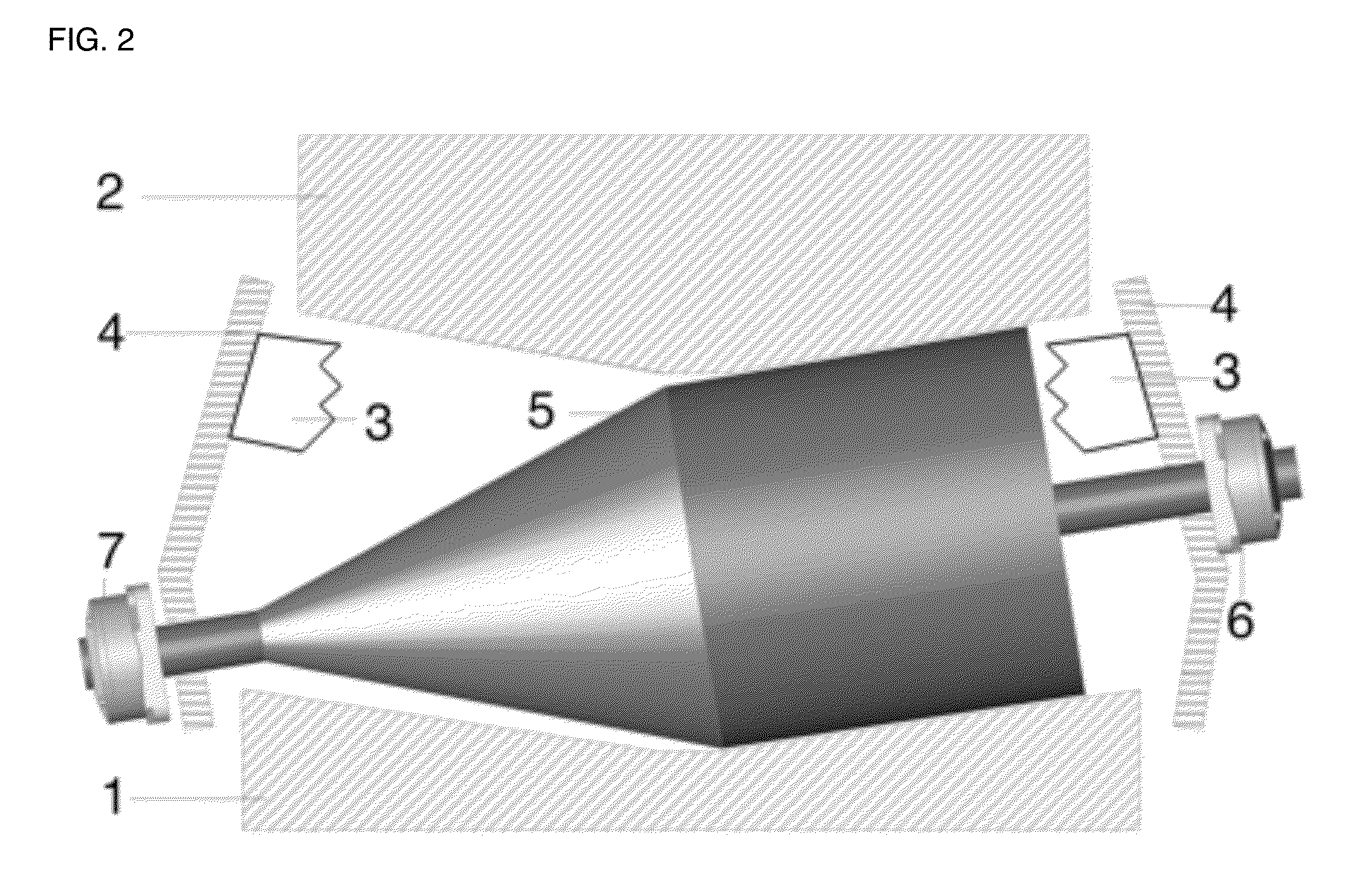Bearing and gear unit for wind turbines
a technology of bearings and gear units, applied in the direction of bearings, toothed gearings, shafts, etc., can solve the problem of power transmission via slip rings, and achieve the effect of facilitating the many poles relatively inexpensively and small stiffness
- Summary
- Abstract
- Description
- Claims
- Application Information
AI Technical Summary
Benefits of technology
Problems solved by technology
Method used
Image
Examples
Embodiment Construction
[0015]In FIGS. 1, 1 and 2 are the inner and outer ring where 1 for a 7MW turbine has a distance of two and a half meters to the bearing center axis in the direction of the wind. 4 is the intermediate ring spacer to which the rollers 5 are attached with bearings 6 and 7.
[0016]FIG. 2 is the corresponding radial section along A-A of FIG. 1 where also a part of the load bearing connection 3 between the two opposed portions of the spacer ring 4 is shown behind roller 5
[0017]In FIG. 3, the load bearing connection 3 is formed as a central freewheeling ring between rings 1 and 2 to which the shafts 4 of the opposing rollers, gears and generators 20 are rigidly fixed.
[0018]FIG. 4 shows a rotationally symmetric section through two opposing roller gear generator units 20 along their axis of symmetry 19. The axial roller bearing 7 supplies the necessary back pressure for the conical roller 5, whose second support is the bearing 6. Concentric with the left extension of 5 with the same shading th...
PUM
 Login to View More
Login to View More Abstract
Description
Claims
Application Information
 Login to View More
Login to View More - R&D
- Intellectual Property
- Life Sciences
- Materials
- Tech Scout
- Unparalleled Data Quality
- Higher Quality Content
- 60% Fewer Hallucinations
Browse by: Latest US Patents, China's latest patents, Technical Efficacy Thesaurus, Application Domain, Technology Topic, Popular Technical Reports.
© 2025 PatSnap. All rights reserved.Legal|Privacy policy|Modern Slavery Act Transparency Statement|Sitemap|About US| Contact US: help@patsnap.com



